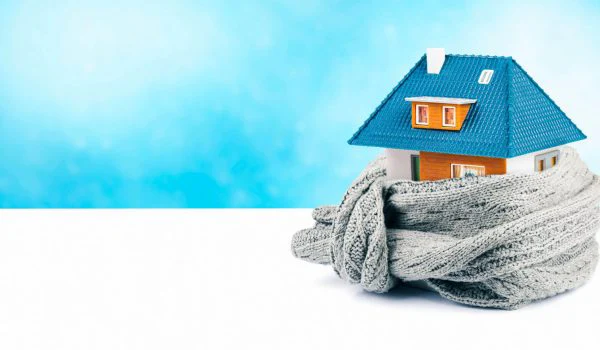
How R38 Insulation Improves Energy Efficiency in Los Angeles Houses
Los Angeles homes face a unique mix of dry heat, cool nights, marine layers, and wildfire smoke. The right insulation helps keep indoor temperatures stable while cutting HVAC run time. R38 insulation in an attic delivers a strong thermal barrier that suits many LA houses, especially in single-family homes from Pasadena to Westchester and the Valley. Pure Eco Inc installs R38 every week across Los Angeles County and sees consistent results: lower energy bills, quieter rooms, and fewer comfort complaints.
What R38 Means and Why It Fits LA Homes
R-value measures resistance to heat flow. Higher numbers resist heat movement better. R38 in an attic creates a thick thermal layer that slows heat from the roof in summer and keeps heat inside during cooler nights. In Los Angeles, that balance matters. Afternoon sun loads the roof deck, attic temperatures spike, and conditioned air leaks out through gaps and ducts. R38 helps cap that loss.
Many LA attics currently sit at R11 to R19, often old fiberglass batts that have gaps, compression, or dust. Bringing an attic up to R38 raises the overall building performance without major changes to interior finishes. Most homes can reach R38 with blown-in cellulose, blown-in fiberglass, or layered fiberglass batts, provided the installer addresses air leakage and ventilation at the same time.
Energy Savings Homeowners Actually See
Pure Eco Inc tracks utility outcomes across neighborhoods like Sherman Oaks, Highland Park, and Culver City. On typical single-story homes with 1,200 to 2,000 square feet, upgrading an attic from roughly R13 to R38 can cut heating and cooling energy use by about 10 to 20 percent. Homes with leaky ducts in the attic skew higher after air sealing and insulation because both issues get corrected together.
Comfort improves in a way owners notice. Second-floor bedrooms run fewer degrees above the thermostat setpoint on hot days. AC cycles stabilize. Nighttime temperature swings shrink, especially in hillside homes that catch canyon winds. For clients who work from home, the drop in radiant heat from the ceiling is obvious by mid-afternoon.
Material Choices That Work in Los Angeles
Fiberglass and cellulose both reach R38 effectively. The right choice depends on roof design, access, and goals such as sound control or sustainability.
- Blown-in cellulose packs well around odd framing and wires. It offers good sound attenuation, which helps near busy corridors like the 405 or 101. It uses recycled content and often delivers R38 with about 10 to 11 inches of settled depth.
- Blown-in fiberglass performs well in vented attics with ample height. It resists moisture absorption and keeps its loft. Expect roughly 12 to 14 inches for R38, depending on product.
- High-density fiberglass batts can hit R38 between rafters or on the attic floor, but only if the framing dimensions allow full thickness without compression. In older bungalows with uneven joists, batts leave more gaps unless combined with careful air sealing.
Spray foam is a different strategy. It moves the thermal boundary to the roof deck. In LA, this can be useful for homes with ducts in a hot attic, vaulted ceilings, or tight crawl-ins. The project scope and cost are higher, and ventilation needs change, so it is better judged case by case.
Air Sealing and Ventilation: The Two Things That Make R38 Perform
The best insulation job fails without air sealing. Warm air in LA summers pushes up through ceiling penetrations: can lights, bath fans, top-plate cracks, and pipe chases. Sealing these leaks with foam and mastic before adding insulation prevents convective looping that undermines R-value. In Pure Eco Inc’s field tests with blower-door equipment, simple sealing often delivers half the comfort gain.
Ventilation keeps the attic dry and reduces shingle and roof deck heat. Vented attics should show balanced intake at the soffits and exhaust near the ridge or at gable ends. In coastal areas like Santa Monica or El Segundo, marine moisture can linger; ventilation preserves insulation performance and helps limit mold risk on roof sheathing. In hot inland zones like Burbank or Northridge, proper venting reduces attic peak temperatures so the insulation works under less stress.
Local Building Context Across Los Angeles
LA houses range from 1920s Spanish Revivals to mid-century ranches and new infill builds. Each has quirks that affect how R38 goes in.
Older homes in Mid City and Silver Lake often have shallow joists, knob-and-tube remnants, and tight hatches. R38 is still achievable with blown-in products after electrical safety checks and damming around the access opening. Mid-century homes in the Valley can have low-slope roofs with tricky soffit pathways; baffles are needed to keep airflow above the new insulation. Newer construction in Playa Vista or Porter Ranch usually has better framing depth, so installing full-depth R38 is straightforward.
Condominiums and small multifamily buildings require coordination with HOAs and fire codes. Fire-rated covers for recessed lights, sealed fire blocks at walls, and correct access protection keep the project clean and compliant.
How R38 Cuts Cooling Load During Heat Waves
During LA heat waves, attic temperatures may hit 130 to 160°F under dark shingles. Without adequate attic insulation, the ceiling radiates heat into living spaces, and the AC fights a losing battle. R38 reduces heat flux through the ceiling so indoor gains slow. On variable-speed heat pumps common in energy retrofits, this can allow longer, lower-speed operation, which saves energy and improves humidity control.
Homeowners who add R38 often report a 2 to 5°F reduction in late-day indoor temperature drift on comparable days. This narrows the gap between setpoint and actual temperature, so the AC cycles less frequently and stays in its efficient range longer.
Noise Reduction and Indoor Air Quality Benefits
While the main aim is energy efficiency, R38 often brings a quieter home. Thicker attic insulation helps dampen traffic noise and aircraft sound on flight paths near LAX and Burbank. Cellulose tends to edge fiberglass for sound absorption, but both help.

Air sealing reduces dust drawn from the attic. It also helps control smoke infiltration during wildfire events. Insulation is not a filter, yet sealing gaps around can lights and ceiling penetrations cuts pathways that let particulate enter. Clients in Studio City and Glendale reported fewer smoke odors during recent fire seasons after sealing and insulating.
What A Proper R38 Install Looks Like
A clean install follows a logical sequence. The crew protects the living area, sets insulation contractor Los Angeles up safe attic access, and clears storage. Old, matted insulation may be removed if contaminated with rodent debris or if it blocks air pathways. Air sealing starts with top plates, chases, and penetrations, then damming is built around the hatch and low-clearance fixtures. Baffles go in at every open soffit bay to preserve airflow. Finally, insulation is installed to the correct depth with even coverage, verified with depth rulers across the attic.

Pure Eco Inc encourages homeowners to step to the hatch and look. The coverage should be level, no visible joists, clear vent baffles, and labeled rulers indicating R-value depth at multiple points. Ducts in the attic should be sealed with mastic and insulated. Bath fans must vent outside, not into the attic.
Cost, Payback, and Utility Incentives in Los Angeles
Costs vary by attic size, access, and prep work. For many LA homes, bringing an attic to R38, including air sealing and vent baffles, tends to fall in a mid four-figure range. If rodent cleanup or electrical remediation is required, the price goes higher.
Payback depends on energy rates and current insulation. With typical electricity rates in the region and mixed fuel use, many homes see a simple payback in 3 to 7 years. Incentives shift over time. Utility and state programs sometimes offer rebates for attic insulation and air sealing; these can shave hundreds of dollars off the cost. Pure Eco Inc helps clients pull current rebate details and prepare documentation.
Common Pitfalls to Avoid
- Covering soffit vents with insulation, which chokes ventilation and traps heat.
- Skipping air sealing, which reduces real-world performance even if the attic shows R38 on paper.
- Compressing batts or leaving voids around wires and junction boxes, which create thermal bypasses.
- Ignoring recessed lighting that is not insulation-contact rated; these fixtures need barriers or replacement.
- Failing to protect the attic hatch with an insulated, gasketed cover; unsealed hatches leak like an open window.
Where R38 Fits Best Across LA Microclimates
Coastal zones like Venice and Redondo Beach benefit from R38 to stabilize indoor temps as marine layers roll in and out. Basin neighborhoods such as Hancock Park and Koreatown gain both cooling and heating efficiency, given denser lots and shared walls that trap heat. The San Fernando Valley, with hotter summers, often sees the strongest AC savings from R38. Foothill communities in Altadena and La Cañada experience cooler nights; R38 helps retain warmth without long furnace cycles.
How to Prep Your Home Before the Crew Arrives
Clearing the attic access and moving fragile items prevents delays. Mark any active leaks or ceiling stains for the crew to inspect from above. If planning electrical upgrades or adding can light covers, decide before installation day. Pets should stay out of work zones. Plan for two to six hours onsite for most single-family homes; larger or complex attics can take a full day.
Why Homeowners Search for “r38 insulation Los Angeles”
Searches often start with bill shock after a heat wave, drafty rooms, or poor performance from a new HVAC system. The phrase “r38 insulation Los Angeles” connects to a practical target: a level of attic insulation that works across most LA homes, is code-aligned for many retrofit scenarios, and provides clear comfort gains. It is specific enough to get real solutions, not generic advice.
Talk With a Local Crew That Solves the Whole Attic
Insulation alone is half the job. Air sealing, venting, duct sealing, and safe electrical clearances make R38 deliver. Pure Eco Inc serves Los Angeles and nearby cities every day, from Echo Park to Woodland Hills and down to Torrance. The team evaluates each attic, explains options in plain language, and provides a written scope that includes materials, depth targets, air sealing points, and any code-related corrections.
Ready to bring your attic up to R38 and cut energy waste? Call Pure Eco Inc or request a visit online. A short site check answers the key questions fast: current R-value, air leakage points, venting status, and the cleanest path to a cooler, quieter home.
Pure Eco Inc. provides professional attic insulation and energy-saving solutions in Los Angeles, CA. For over 20 years, our family-owned company has helped homeowners improve comfort, reduce utility bills, and make their homes more energy efficient. We specialize in insulation upgrades, spray foam installation, and attic cleanup for homes across Los Angeles County. At Pure Eco Inc., we believe in treating our customers like family and creating a greener, healthier living environment for every household we serve. Call today to schedule an attic insulation inspection or get a free estimate. Pure Eco Inc.
422 S Western Ave #103 Phone: (213) 256-0365 Website: https://www.pureecoinc.com Social Media:
Facebook |
X |
Instagram |
Yelp
Map: View on Google Maps
Los Angeles,
CA
90020,
USA